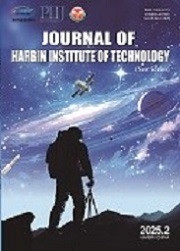| Related citation: | Yonglin Jiang,Bingguo Liu,Peng Liu,Jinhui Peng,Libo Zhang.Dielectric Characterization and Microwave Roasting of Molybdenite Concentrates at 915 MHz Frequency[J].Journal of Harbin Institute Of Technology(New Series),2019,26(3):58-67.DOI:10.11916/j.issn.1005-9113.17072. |
|
| |
|
|
| This paper has been: browsed 1264times downloaded 882times |

码上扫一扫! |
|
|
| Dielectric Characterization and Microwave Roasting of Molybdenite Concentrates at 915 MHz Frequency |
|
| Author Name | Affiliation | | Yonglin Jiang | National Local Joint Engineering Laboratory of Engineering Applications of Microwave Energy and Equipment Technology, Kunming 650093, Yunnan, China
Key Laboratory of Unconventional Metallurgy, Ministry of Education, Kunming University of Science and Technology, Kunming 650093, Yunnan, China
Faculty of Metallurgical and Energy Engineering, Kunming University of Science and Technology, Kunming 650093, Yunnan, China | | Bingguo Liu | National Local Joint Engineering Laboratory of Engineering Applications of Microwave Energy and Equipment Technology, Kunming 650093, Yunnan, China
Key Laboratory of Unconventional Metallurgy, Ministry of Education, Kunming University of Science and Technology, Kunming 650093, Yunnan, China
Faculty of Metallurgical and Energy Engineering, Kunming University of Science and Technology, Kunming 650093, Yunnan, China | | Peng Liu | National Local Joint Engineering Laboratory of Engineering Applications of Microwave Energy and Equipment Technology, Kunming 650093, Yunnan, China
Key Laboratory of Unconventional Metallurgy, Ministry of Education, Kunming University of Science and Technology, Kunming 650093, Yunnan, China
Faculty of Metallurgical and Energy Engineering, Kunming University of Science and Technology, Kunming 650093, Yunnan, China | | Jinhui Peng | National Local Joint Engineering Laboratory of Engineering Applications of Microwave Energy and Equipment Technology, Kunming 650093, Yunnan, China
Key Laboratory of Unconventional Metallurgy, Ministry of Education, Kunming University of Science and Technology, Kunming 650093, Yunnan, China
Faculty of Metallurgical and Energy Engineering, Kunming University of Science and Technology, Kunming 650093, Yunnan, China | | Libo Zhang | National Local Joint Engineering Laboratory of Engineering Applications of Microwave Energy and Equipment Technology, Kunming 650093, Yunnan, China
Key Laboratory of Unconventional Metallurgy, Ministry of Education, Kunming University of Science and Technology, Kunming 650093, Yunnan, China
Faculty of Metallurgical and Energy Engineering, Kunming University of Science and Technology, Kunming 650093, Yunnan, China |
|
| Abstract: |
| The magnetic hysteresis loop was measured to know the magnetic property of molybdenite concentrate. In order to evaluate its microwave absorption capacity, the dielectric properties of molybdenite concentrate was investigated using cavity perturbation method at 915 MHz dependent on densities and temperatures. The parameter data were fitted using regression fit and a model related to the same density and temperature ranges was developed. A nonlinear surface fitting was used to present visually the effect of dielectric parameters on the microwave penetrate depth of molybdnite concentrate. The crystal products of MoO3 obtained from microwave roasting at different temperatures were examined by scanning electron microscopy (SEM) and X-ray diffraction (XRD). The results show both the dielectric constants and loss factors increase in the increase of apparent densities and temperatures with different growth rates in the experimental range. Due to the distinguished trend of dielectric performance dependent on temperatures, two parts in the heating scenario for the molybdenite concentrate samples were divided. The microwave penetration depth is inversely proportional to both apparent densities and temperatures. The nonlinear fitting surfaces indicate the increase of dielectric loss provides an enough decrease in microwave penetration depth. In contrast, the dielectric constant has a positive effect for it. Pure MoO3 was produced at 800 ℃ by using microwave energy. This work can be helpful to design and simulate microwave system for efficient beneficiation of molybdenite concentrate and to prepare molybdenum products from this concentrate. |
| Key words: dielectric properties temperature molybdenite concentrate microwave heating |
| DOI:10.11916/j.issn.1005-9113.17072 |
| Clc Number:TF19 |
| Fund: |
|
| Descriptions in Chinese: |
| 辉钼精矿的介电特性及915MHz时的微波焙烧 蒋永林1,2,3,刘秉国1,2,3,刘鹏1,2,3,彭金辉1,2,3,张利波1,2,3 (1. 微波能工程应用及装备技术国家地方联合工程实验室,云南 昆明650093; 2. 昆明理工大学 非常规冶金省部共建教育部重点实验室,云南 昆明650093; 3.昆明理工大学 冶金与能源工程学院,云南 昆明650093) 创新点说明:1) 测定了辉钼精矿原料的磁滞回线,结果表明辉钼精矿的磁化强度较弱,在选矿方法上不能使用磁选方法,但其固有磁特性可以增强对微波电磁场的耦合作用,从而增强其吸波性能。 2) 在915MHz微波频率条件下,辉钼精矿的介电特性随着表观密度和温度的增加而增强,表现为对微波吸收和转化能力增强,这也使得在辉钼精矿物料层中微波的穿透深度减小,此时受物料的温度均匀性也将受到影响。所以在使用微波能时物料的状态需要考虑。 3) 利用微波可将辉钼精矿升温到800℃以上,并获得了纯净的三氧化钼晶体。将作为清洁能源的微波能应用到辉钼精矿的热处理中是完全可行的,包括选矿、干燥、焙烧甚至升华生产高纯三氧化钼的工艺中都可引用。 4) 本文将辉钼精矿固有的磁特性和介电特性(在微波能应用中主要考虑介电特性)为研究基础,详细说明了在常见密度条件和基本升温段内介电特性的变化规律并分析了原因,另外通过微波加热焙烧在800℃时获得了质量优良的三氧化钼晶体。以良好的实验设备支撑,研究方法简易而可靠,结果可信。 研究目的: 本文通过考察辉钼矿本身固有的介电特性,分析了它对微波电磁力的吸收耦合强度,从微波能应用的基础理论上证实了,微波作为一种清洁能源,完全可以引入到辉钼精矿热法处理的各个工艺中。从介电特性入手算是一个新的视角,对微波加热方面的研究和应用来说,具有一定参考价值。 研究方法: 1) 利用磁滞回线测量仪测定了辉钼精矿的磁滞回线,结果表明辉钼精矿的磁化强度较弱 2) 利用空腔微扰技术(设备为矢量网络分析仪和一套可升温的微扰装置)测定了辉钼精矿的介电特性;试验分析结果表明,辉钼矿具有较强的吸波性能,在高温下仍能持续损耗微波,产生更多的热。 3) 利用微波高温材料处理系统(文中图4)对辉钼精矿物料进行了氧化焙烧尝试, 并获取了质地优良的三氧化钼晶体,通过实验考察说明了将微波应用于辉钼精矿的火法工艺中是可行的。 结果: 1) 辉钼精矿的磁化强度较弱,在筛选时不能使用磁选法,但固有的磁特性可增强它对微波电磁场的耦合作用,提高吸波及转化能力。 2) 辉钼精矿具有较强的介电性能, 当表观密度变大和温度较高时微波在辉钼精矿中的穿透深度降低,物料升温均匀性将受到影响,在加热操作中可根据需要调控物料颗粒间隙或增减微波输入功率。 3) 使用微波加热辉钼精矿并在800℃时保温3分钟后,可得到三氧化钼晶体,此后辉钼精矿继续吸波。由此推知利用微波加热升华辉钼精矿制备高纯三氧化钼晶体是可行的,而在低温时也可以将微波引用到辉钼精矿的选矿操作中。 结论: 本文的研究结果对于设计用于加热辉钼精矿的微波升温反应器以及如何将微波应用到辉钼精矿选矿和火法分解的工艺中等都提供了理论依据和数据参考。 关键词:介电特性;温度;辉钼精矿;微波加热 |
|
|
|
|




